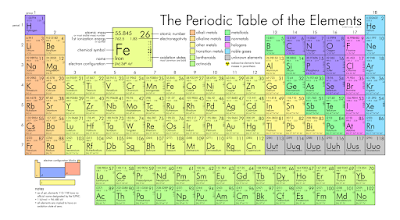
It's been five years since California adopted the Common Core State Standards for mathematics and English language arts.
During that time, the search for high-quality textbooks and curriculum materials has been a sticking point, in some cases a major one, in effectively and speedily implementing the new standards.
 That’s according to leaders in several school districts where EdSource is tracking Common Core implementation. Read more from EdSource.org.
That’s according to leaders in several school districts where EdSource is tracking Common Core implementation. Read more from EdSource.org.
School districts are making progress in finding and selecting the right materials, but the complicated effort has stymied many districts across California and around the country.
The task of finding a good curriculum for teaching elementary math does not need to be this complex!
The good news is that Excel Math Common Core Editions help give students a strong foundation in math and prepares students for Common Core testing as well as for district and classroom assessments.
 Excel Math is a proven way to get students interested in learning math and progressing in their math abilities.
Excel Math is a proven way to get students interested in learning math and progressing in their math abilities.
 Excel Math lessons prepare students for real-world problem solving. With it's uniquely detailed spiraling process, Excel Math helps students build success in math and actually retain concepts for the long term. What a concept!
Excel Math lessons prepare students for real-world problem solving. With it's uniquely detailed spiraling process, Excel Math helps students build success in math and actually retain concepts for the long term. What a concept!
Download our "Successful Strategies for Implementing Excel Math Mid Year" for step-by-step guidelines to begin teaching with Excel Math today. There's no need to wait for summer or fall.
 Students can begin preparing for spring testing now.
Students can begin preparing for spring testing now.
And you can expect to watch test scores rise when Excel Math is used in either a core or supplement position to complement your existing core math program.
Ring in the New Year with these steps to building student success with math.
Then give us a call to schedule your Professional Development sessions with Bob or Becky. Read more about Excel Math PD for our Standard, Common Core and Texas Editions.
During that time, the search for high-quality textbooks and curriculum materials has been a sticking point, in some cases a major one, in effectively and speedily implementing the new standards.
 That’s according to leaders in several school districts where EdSource is tracking Common Core implementation. Read more from EdSource.org.
That’s according to leaders in several school districts where EdSource is tracking Common Core implementation. Read more from EdSource.org.School districts are making progress in finding and selecting the right materials, but the complicated effort has stymied many districts across California and around the country.
The task of finding a good curriculum for teaching elementary math does not need to be this complex!
The good news is that Excel Math Common Core Editions help give students a strong foundation in math and prepares students for Common Core testing as well as for district and classroom assessments.
 Excel Math is a proven way to get students interested in learning math and progressing in their math abilities.
Excel Math is a proven way to get students interested in learning math and progressing in their math abilities. Excel Math lessons prepare students for real-world problem solving. With it's uniquely detailed spiraling process, Excel Math helps students build success in math and actually retain concepts for the long term. What a concept!
Excel Math lessons prepare students for real-world problem solving. With it's uniquely detailed spiraling process, Excel Math helps students build success in math and actually retain concepts for the long term. What a concept!Download our "Successful Strategies for Implementing Excel Math Mid Year" for step-by-step guidelines to begin teaching with Excel Math today. There's no need to wait for summer or fall.
 Students can begin preparing for spring testing now.
Students can begin preparing for spring testing now.And you can expect to watch test scores rise when Excel Math is used in either a core or supplement position to complement your existing core math program.
Ring in the New Year with these steps to building student success with math.
Then give us a call to schedule your Professional Development sessions with Bob or Becky. Read more about Excel Math PD for our Standard, Common Core and Texas Editions.






